Use Text Sets to Spark Unstoppable Learning
By Katie and Chris Cunningham
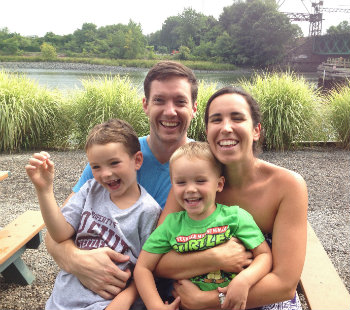
For us, it is that students become more self-driven in their approach to learning, more resilient as they face inevitable pitfalls and adversity, and more empathetic through valuing, respecting, and understanding another person’s views.
So, how do we do all that? We believe it is possible when we support middle schoolers to experience the feeling of unstoppable learning, and when they then want to share what they’ve learned and what they believe with each other.
Unstoppable learning for grownups
First, it’s helpful to think about times when you have been engaged in that feeling of unstoppable learning and when you wanted to tell everyone you know about what you found out. (We recommend listening to the TED Radio Hour for some inspiration.)
We look to our own reading lives for evidence of our unstoppable learning. Donalyn Miller (2013) might consider us (Chris, especially) “readers in the wild.” We choose to read and we read widely. Chris is known at our local public library for taking out a dozen books, quickly abandoning some, and burying his head for a while in others.

The diversity offered by text sets reflects real life
Essentially, we are living “text-set literacy” lives. A text set can be defined as a group of related texts that share a common theme. While many of our middle schoolers lead similarly diverse literacy lives outside of school, the canonical, core-text approach continues to dominate the literacy experience in middle school classrooms. Either that, or there is an overemphasis on reading as an independent act rather than a social one. Why?
Our peers in math and science have STEM or STEAM or even STREAM (Science, Technology, Reading, Engineering, Arts, Math — although you could argue that at this point we’re just talking about “school”). This acknowledges that there are components of knowledge and learning that are best approached thematically rather than by discipline and that students learn best when they are encouraged to see the connections between seemingly disparate areas of study.
Shifting curriculum development to a text-set approach handles a number of different competencies that we see as increasingly important and significant in our modern world. In the digital landscape, for example, learning is necessarily multi-modal and multi-genre.
When we’re flipping through podcasts, we don’t stop to consider the choice to move from Dan Carlin’s Hardcore History to WNYC’s Radiolab, despite the fact that there are potentially interesting connections to be made between the two. Rather, we approach both podcasts to pursue personal learning that is necessarily thematic in the sense that it is self-directed, story-driven, and ultimately about human connection.
The power of narrative
What drives the text sets we construct for ourselves, and that our middle schoolers are already constructing in their own lives, is the enduring power of narrative – stories. As Thomas Newkirk (2015) reminds us, we are always asking what’s the story? The ways of thinking we bring to works of literature are also the essential ways of thinking that we use to make meaning of any text.
The spaces where stories live should always help us continue to explore our place in a complex world system – whether we are moved by characters in a book, an image on a screen, or the experience of hearing someone’s words. We are always seeking patterns, interconnectedness, and relevance.
Taking this premise one step further, we can utilize text sets to do the work that James Beane (1990) suggested over two decades ago. In approaching curriculum for adolescent students, Beane suggested that the centerpiece of middle school curricula be “thematic units whose organizing centers are drawn from the intersecting concerns of early adolescents and issues in the larger world.” (p. 68)
Chris’s Reason and Rhetoric course
To do that, Chris created a course at Harlem Academy entitled Reason and Rhetoric to tap into the social worlds and narrative-driven lives middle schoolers lead. The goals of the course across grades 5 through 8 were to develop literacy skills that would allow students to explore a wide variety of subjects and disciplines in a thoughtful and rigorous manner – to equip them with the ability to think fluidly across the curriculum and to share their thinking with one another.
In developing the curriculum for these courses, Chris first considered the issues that middle schoolers experience in their own lives as well as the local and global issues that young adolescents could grapple with, first to develop their own lines of reasonable thinking and then to speak and listen with others to grow their ideas and learn from each other. The issues-based curriculum was organized according to topics, including:
► Responsibility and Interdependency – which focused both on finding a place in the group as well as global independence.
► Friendship – which examined personal friendships and social welfare.
► Resolving Conflicts – which equally looked at peer conflict as well as global conflict.
► Empathy and Compassion – which explored what we share as members of the classroom and as members of the human race.
► Transitions – which considered strategies to deal with challenges ahead if we don’t know what they’ll be, whether those are issues students have when moving to high school or the current events from our rapidly changing world.
The heart of bringing the curriculum to life was in the generation of text sets driven by compelling stories across genres, modes, and media. Here are two middle grades examples.
In grade 5:
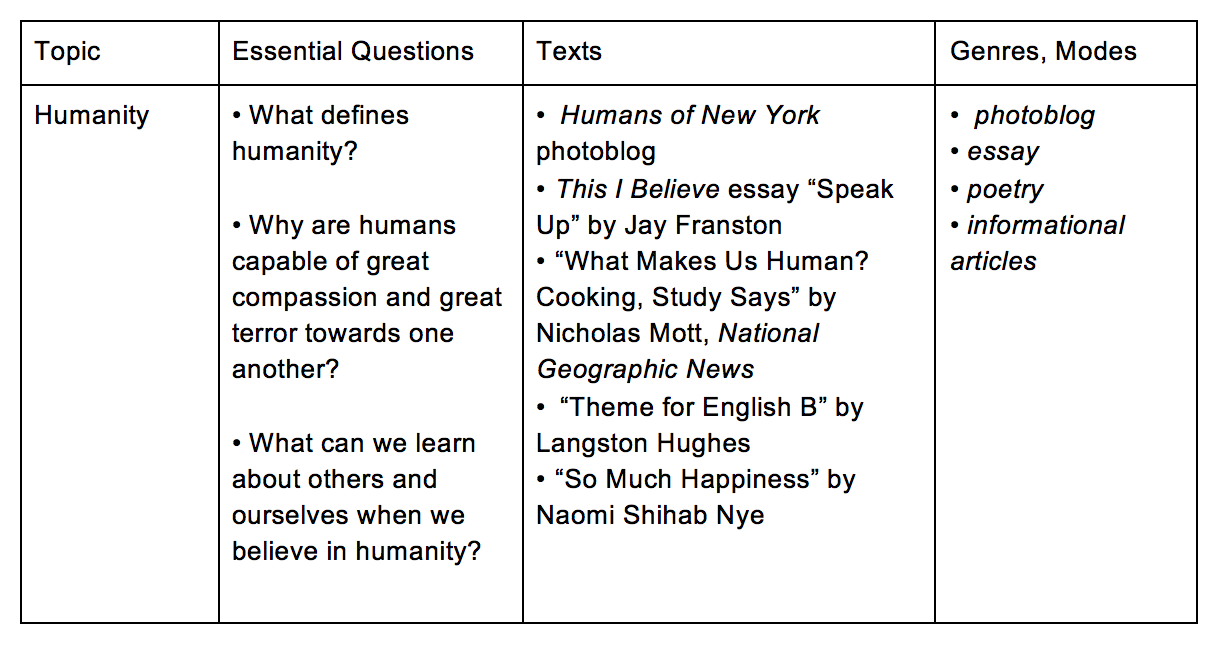
There are many advantages to shifting curriculum development and teaching practices to a text set approach. Perhaps the most important is that your students will find their social worlds acknowledged through literacy and that they will inevitably find their learning unstoppable.
How To Build a Thematic, Issues-Based Text Set
While there are many different possibilities for how to build thematic text sets, this is the procedure Katie uses in her book, Story: Still the Heart of Literacy Learning, as a co-author of the blog The Classroom Bookshelf, and most importantly, in her work in schools.
- Come to know your students’ interests and identities through a variety of methods such as heart maps, life trajectory maps, community maps, digital autobiographies, shelfies, and photoblogging.
- Consider the themes that influence your teaching, your students’ learning, and your students’ lives. Collaborate with others to explore interdisciplinary possibilities and to craft guiding questions that will support the study of texts around a common theme.
- Consult awards lists, blog sites, and reviews from The Classroom Bookshelf, School Library Journal, Kirkus Reviews, and GoodReads to expand the core literature that anchor the text set.
- Use sources like The Poetry Foundation and Poets.org to incorporate poetry into the text set.
- Consider contemporary as well as canonized music (ie. The Beatles) to build in lyric study around the same theme.
- Bookmark children’s, young adult, and news digital texts especially from sites such as newsela.com, National Geographic for Kids, and Time for Kids. Balance sources written for an audience of young adults with readings from The New York Times and your local news sources.
- Bookmark multimedia such as TED talks, TED Radio Hour clips, CNN news clips, and audio stories from sources like NPR’s The Moth or Storycorps.
- Search for online stories and essays organized according to theme from sites such as This I Believe and Cowbird.
- Look for visual images such as photographs, paintings, and advertisements that evoke similar themes. Search sources such as The Metropolitan Museum of Art and the Museum of Modern Art online.
- Save student written and produced texts that can be woven into your text sets in the future.
If you already use literacy text sets in your classroom to help students experience powerful, authentic stories, please share some of your own ideas in the comments.
Topic Resources
- Wonder by RJ Palacio
- Mockingbird by Kathryn Erskine
- Migrant Mother photos by Dorothea Lange
- The Power of Empathy RSA Short Film by Brene Brown
- Humans of New York photoblog
- “Speak Up” NPR This I Believe essay by Jay Franston
- “What Makes Us Human? Cooking, Study Says” by Nicholas Mott, National Geographic News
- “Theme for English B” by Langston Hughes
- “So Much Happiness” by Naomi Shihab Nye
Works Cited
Beane, J. (1990). A middle school curriculum: From rhetoric to reality. Alexandria, VA: National Middle School Association.
Cunningham, K. (2015). Story: Still the heart of literacy learning. Portland, ME: Stenhouse.
Miller, D. (2013). Reading in the wild: The book whisperer’s keys to cultivating lifelong reading habits. San Francisco, CA: Jossey-Bass.
Newkirk, T. (2014). Minds made for stories: How we really read and write informational texts. Portsmouth, NH: Heinemann.
_________
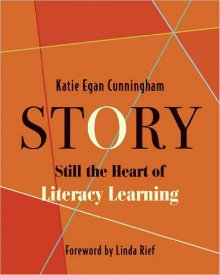
Chris Cunningham was the founding Director of the Middle School at Harlem Academy. He is now the Head of Middle School at King School in Stamford, CT. He’s been a middle school English and history teacher and holds an MEd in Leadership for Educational Change from the Bank Street College of Education. Chris can be reached at cunninghamp02@gmail.com and @chriscunningham on Twitter.
The Cunninghams live in the woods in Connecticut with their two young sons who remind them that we all crave powerful stories in all of their forms.

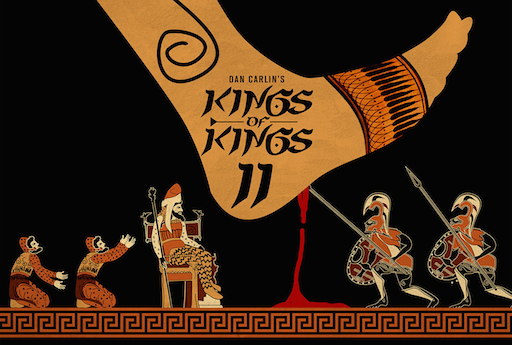
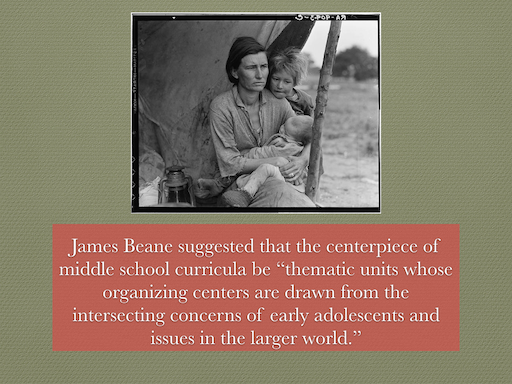
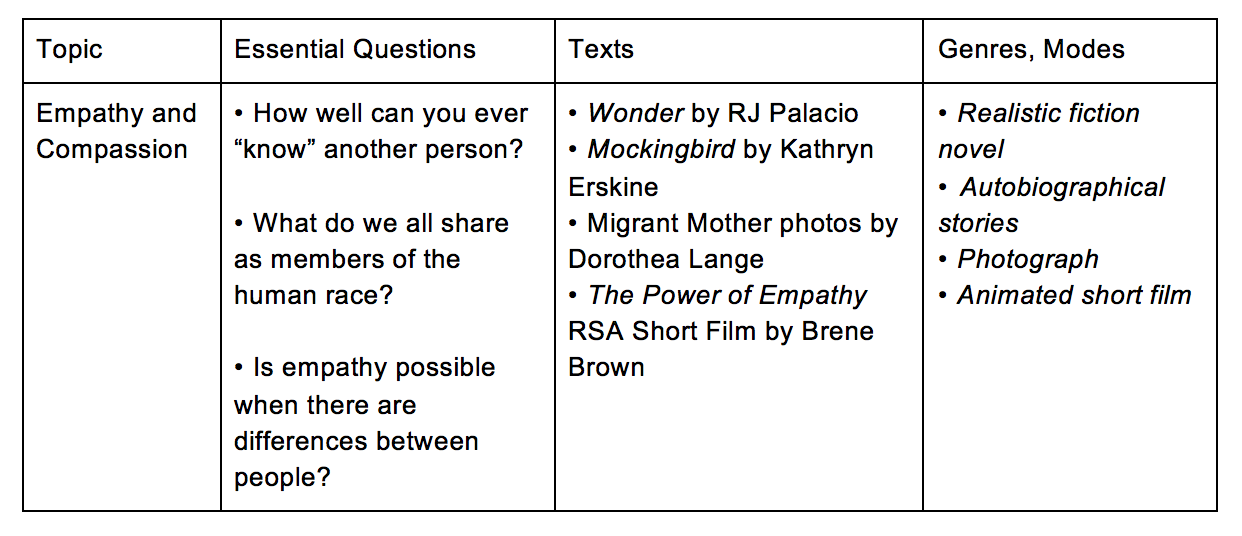




































Loaded with great ideas. One of my favorites is to “Save student written and produced texts that can be woven into your text sets in the future.” What a powerful way to offer students an authentic audience for their texts … by sharing those texts as teaching materials for future classes.
We help teachers incorporate primary sources into text sets. These informational texts can provide engaging perspectives (think political cartoons!) and help learners understand context. Primary source sets from the Library of Congress offer one extensive and powerful pathway. http://loc.gov